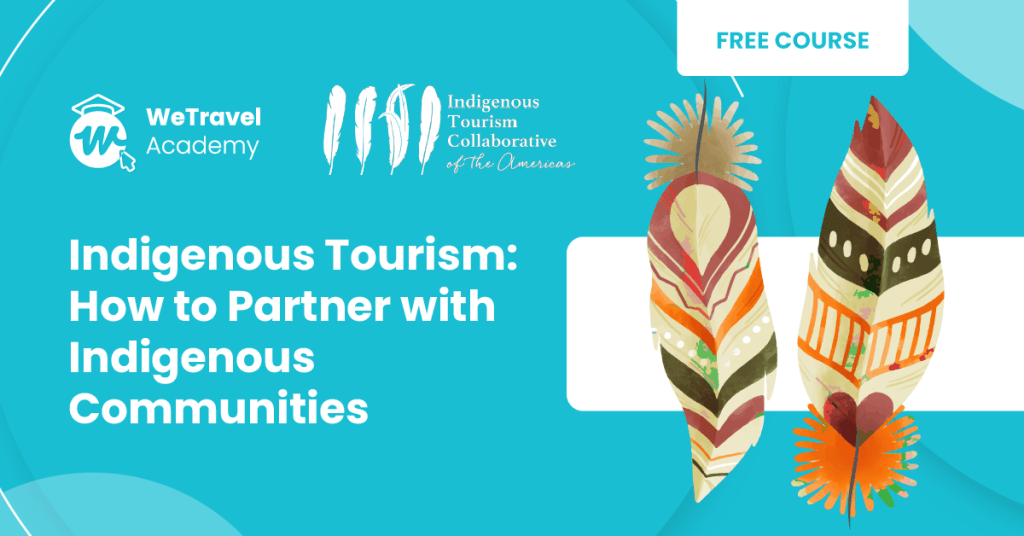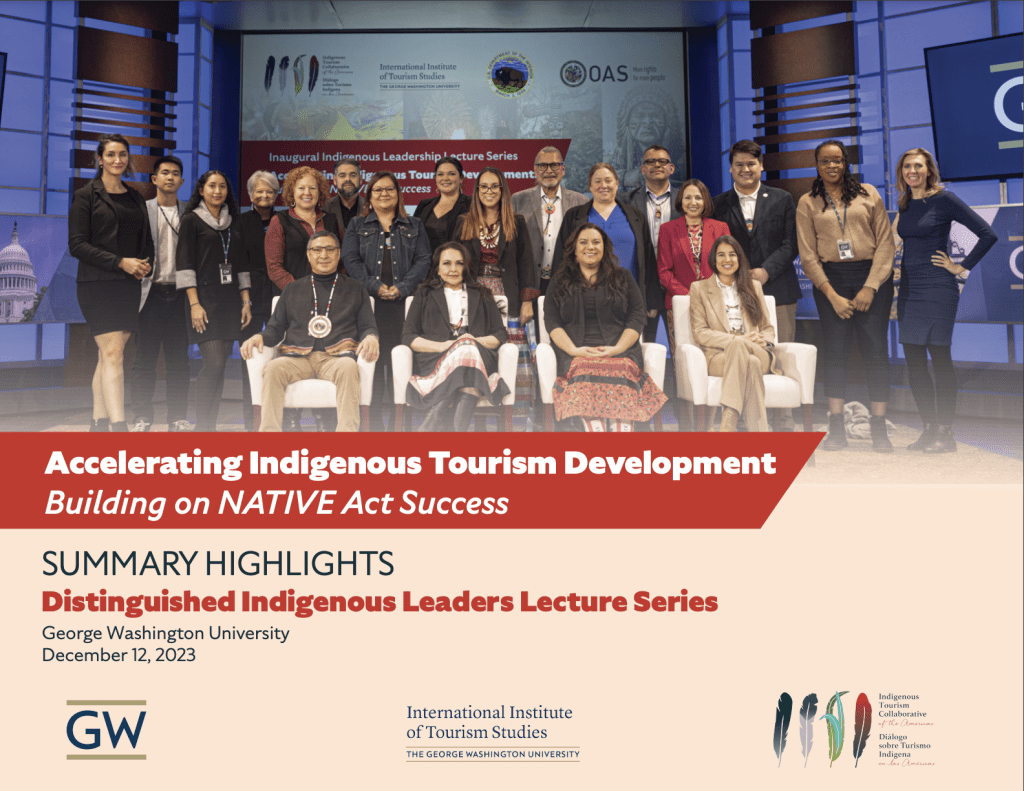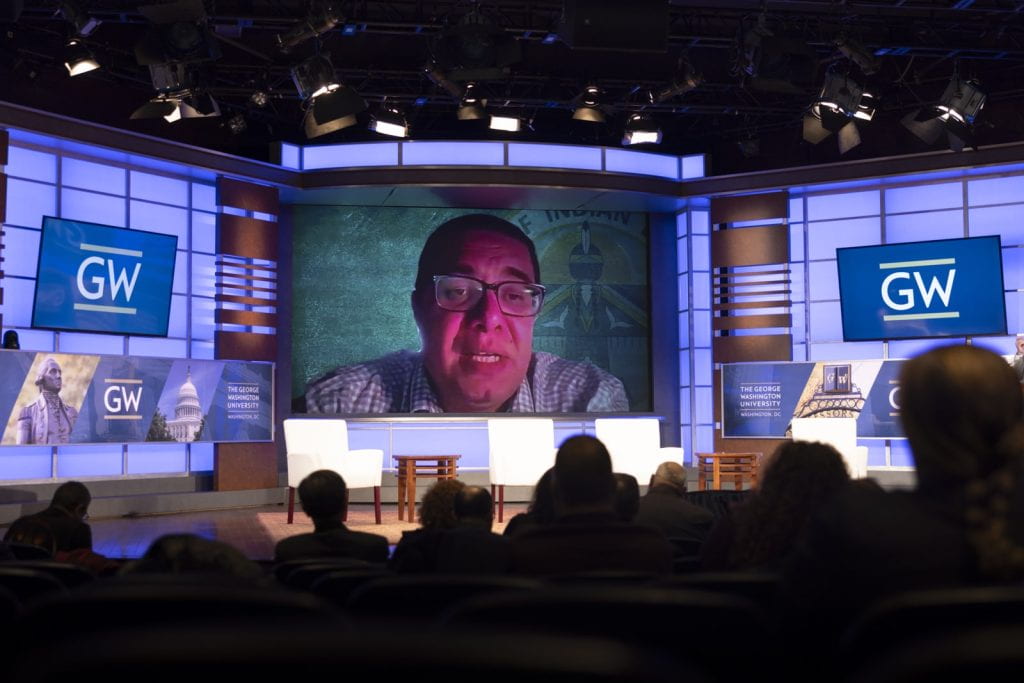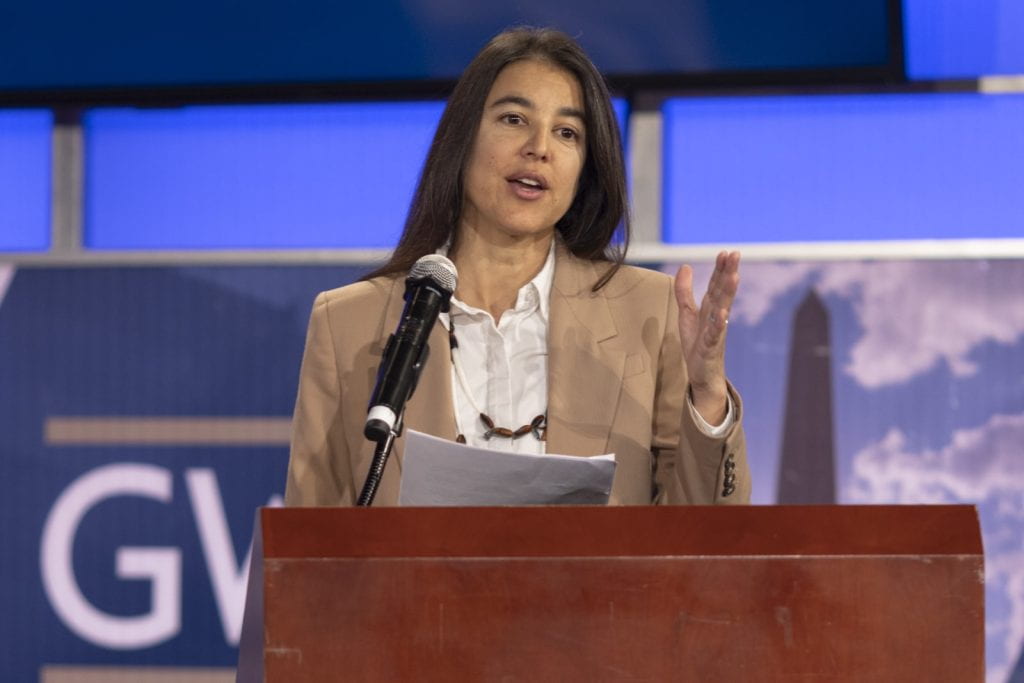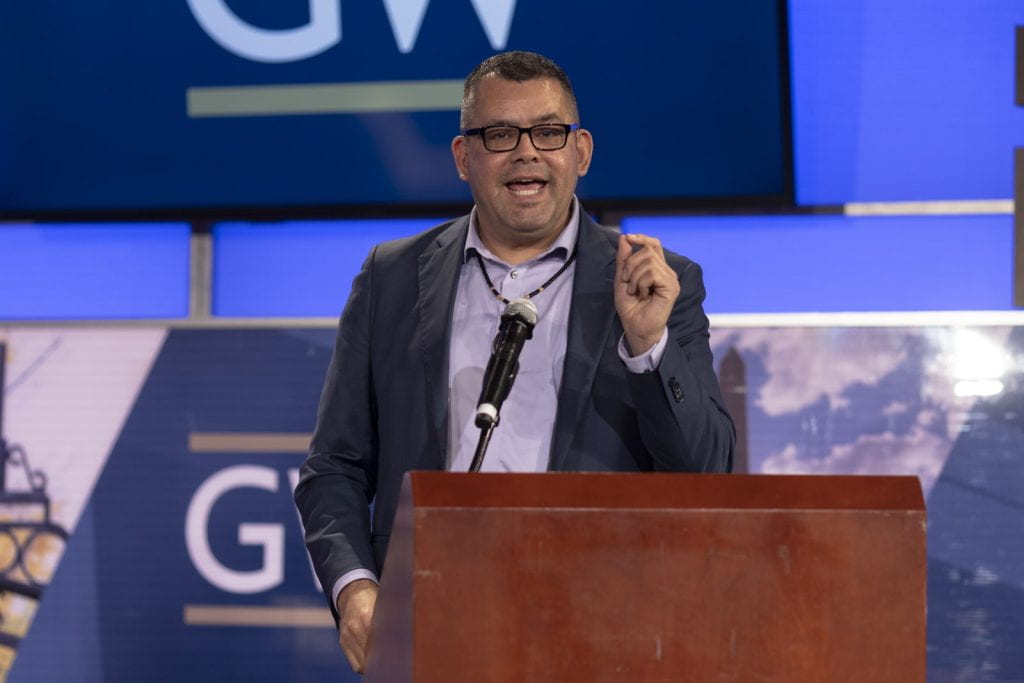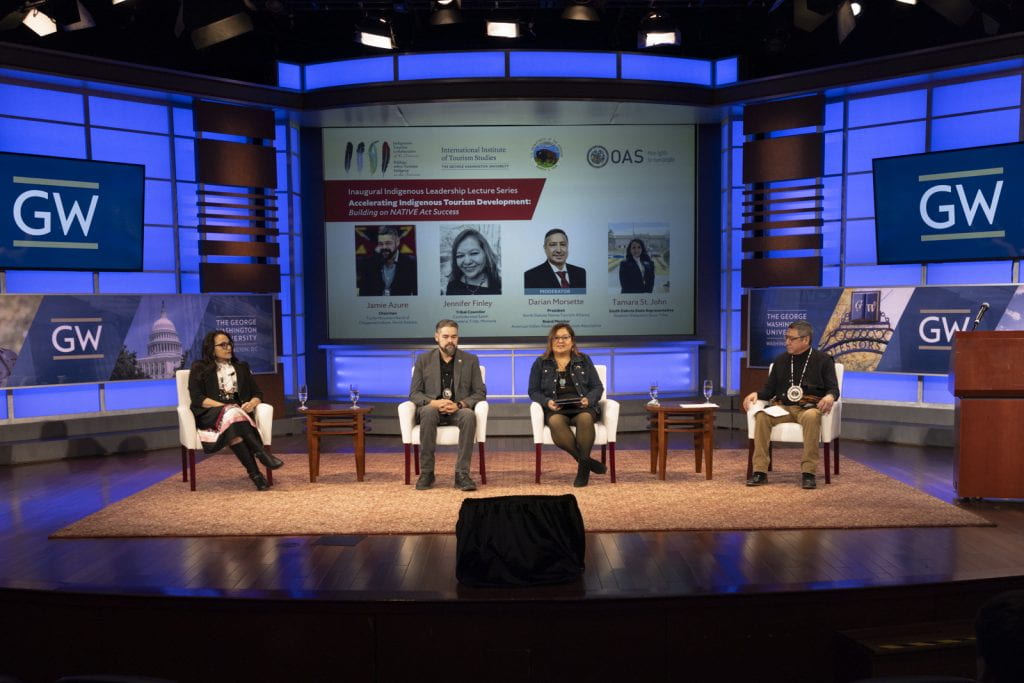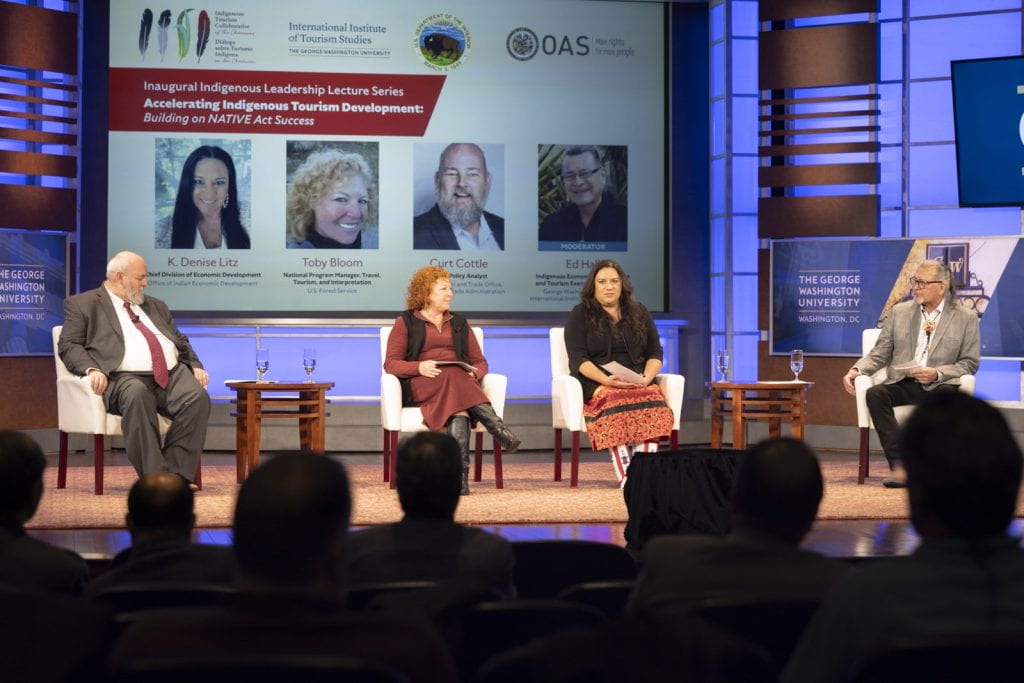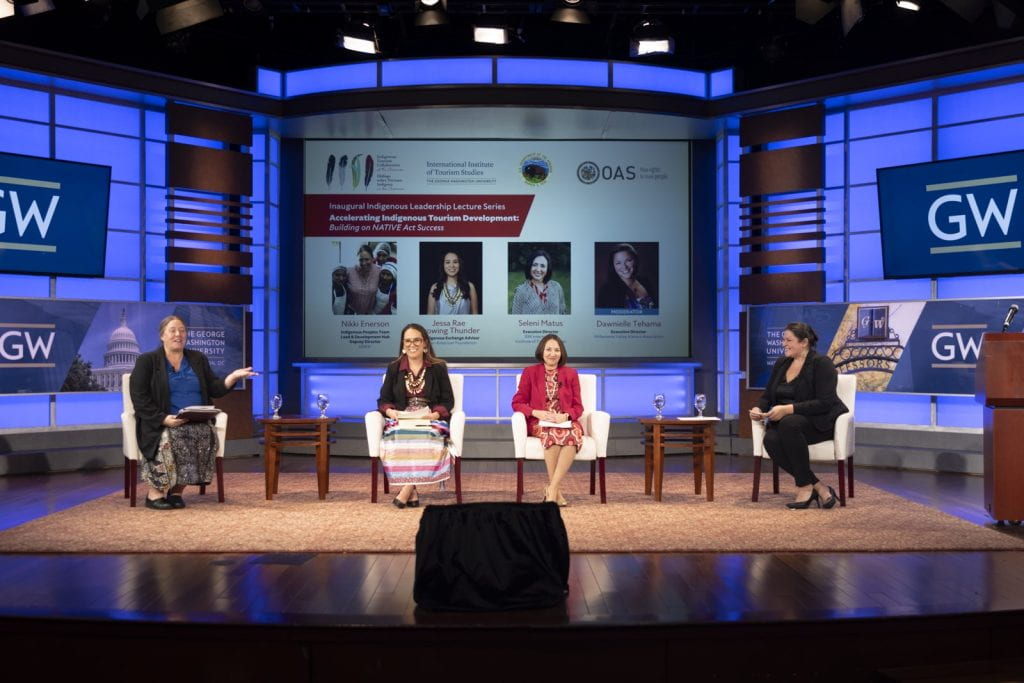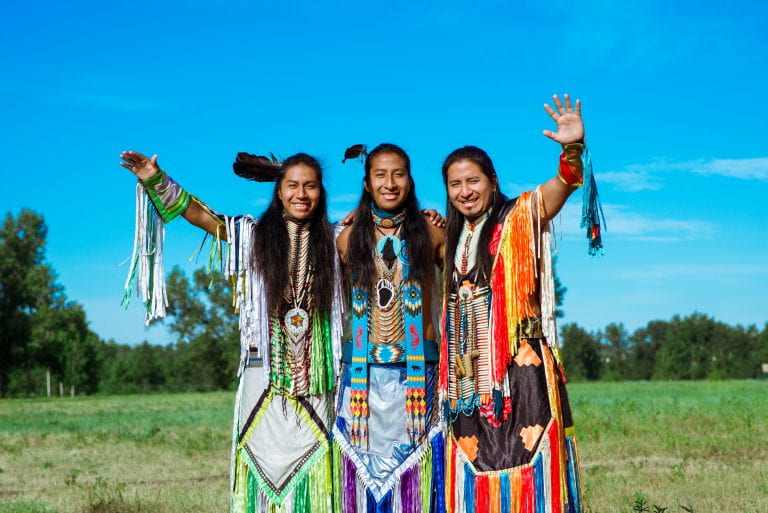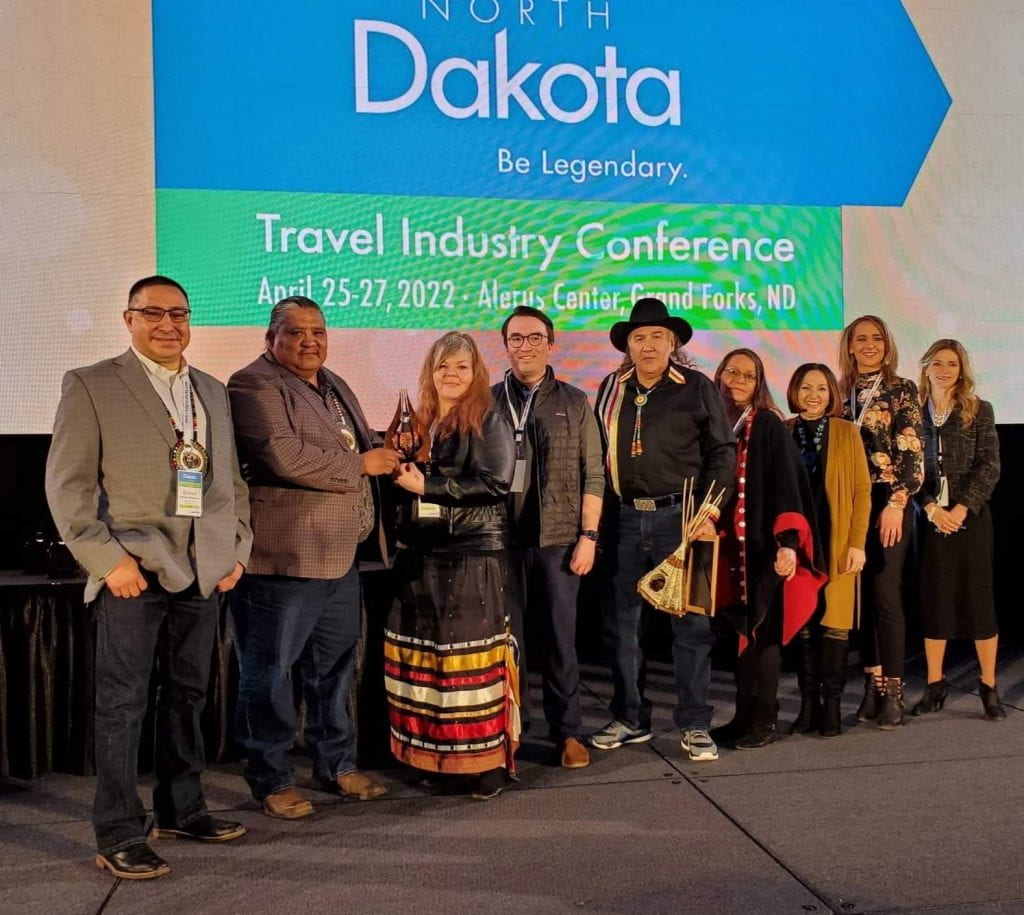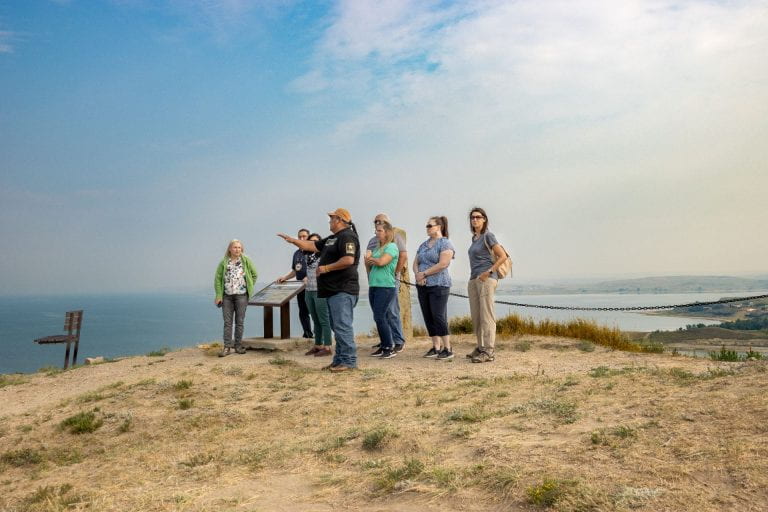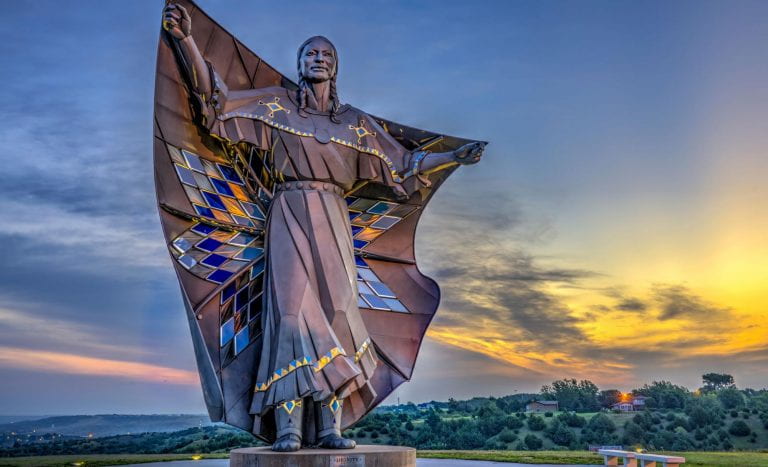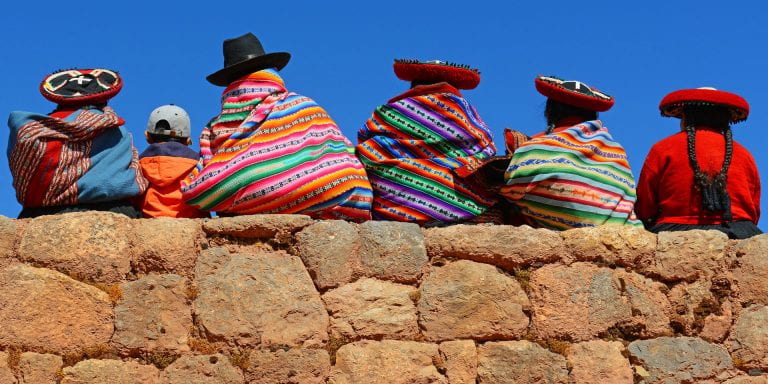On Indigenous Peoples’ Day, we honor the resilience, contributions, and sovereignty of the Native peoples who were the original stewards of the land.
First proclaimed in 2021 by President Biden, this day is a reminder of our country’s responsibility to recognize and uphold the rights of Indigenous communities, a responsibility we have failed to do time and time again. It is also a day to reflect on the deep injustices Native peoples in the U.S. have endured, celebrate their lasting strength, and honor their unique and rich heritage.
Historically, Indigenous peoples have been excluded from the planning, management, capacity building, governance, and marketing of tourism, including tourism that takes place on their lands. Despite being key cultural and natural attractions, Indigenous communities rarely benefit from tourism dollars generated on their lands and in their communities, with the majority of profits flowing to non-Indigenous businesses.
According to the American Indian Alaska Native Tourism Association (AIANTA) 2024 Economic Impact of U.S. Indigenous Tourism Businesses Report, Native tourism, which includes American Indian, Alaska Native, and Native Hawaiian businesses, generated approximately $15.7 billion in sales annually. From 2017 to 2020, the number of Indigenous tourism businesses grew by 230%, though they still represent only a small fraction—about 1.5%—of the total U.S. tourism economy.
By building their capacity, Indigenous communities have been developing their own tourism products, reclaiming their narratives, and asserting ownership of their history and culture, all of which is critical for undoing the centuries-long cycle of cultural erasure and misrepresentation. Indigenous-led tourism allows Indigenous communities to control and validate how their histories, cultures, and lands are portrayed to visitors, ensuring that their stories are told in a way that respects their heritage and prioritizes their values.
Developing Native-Led Tourism Products
In South Dakota, tourism contributes significantly to employment and state revenues. In 2019, the state welcomed a record 14.5 million visitors. Tourism spending reached $3.98 billion, a 2.8% rise from the previous year, and supported more than 55,000 jobs. At the time, there was no meaningful connectivity between the Tribal Nations in South Dakota and the millions of tourists that visit the major attractions in and around the Black Hills region, Badlands National Park, and Sioux Falls. To fill this gap, the South Dakota Native Tourism Alliance (SDNTA) was formed as a way for South Dakota’s Tribal Nations to take ownership of developing, implementing, and promoting Native products and experiences.
Developing tourism products includes developing the infrastructure to manage, and promote products and experiences. Since forming five years ago, the SDNTA has made great strides towards their goal of becoming an independent nonprofit that develops, manages, and promotes Native tourism in South Dakota. In January, they approved organizational bylaws and elected all remaining seats to the Board, with at least one representative from each Tribal Nation and three at-large non-Tribal Nation members. The SDNTA also filed the paperwork for nonprofit status in both South Dakota and at the federal level and in September was awarded its first grant to strengthen its organizational capacity.
This structure has allowed the SDNTA members to come together more effectively to develop, manage, and promote Native tourism in South Dakota. This summer, Destination America and Trafalgar Tours marked their second year of partnership with the SDNTA on the “National Parks and Native Trails of the Dakotas” nine-day tour, which explores tribal lands and national parks in North and South Dakota. So far this year, 62 visitors participated on the tour, which includes visits to the Pine Ridge, Rosebud, and Lower Brule Reservations, as well as the Lakota Youth Development (LYD) site in Herrick and the Dakota Indian Foundation in Chamberland. With its enhanced organizational capacity, the SDNTA is positioned to develop additional products and experiences for visitors.
In 2023 in Maine, 15,267,000 visitors spent more than $9 billion and supported 131,000 jobs throughout the state. Despite Maine’s thriving tourism industry, few benefits accrue for the Indigenous Wabanaki communities. The Maine Wabanaki Cultural Tourism Plan, developed by a partnership between the Four Directions Development Corporation (FDDC) and George Washington University, was finalized in August to serve as a guide for Wabanaki Nations and their Native and non-Native partner organizations to collaboratively and respectfully develop cultural tourism products that benefit Wabanaki communities, entrepreneurs, and businesses while offering authentic and educational experiences to visitors.
Critical to the success of FDDC initiatives is capacity-building. Early on, FDDC recognized this need and hired cultural tourism fellows, one per nation, to assist their community with developing products and experiences. To further support FDDC, staff and the fellows underwent training on cultural tourism and product development, facilitated by the GW team, to equip them with the skills, knowledge, and resources to promote Native-led cultural tourism development within their communities. Moving forward, the FDDC team will train additional cultural tourism fellows to work closely with their communities.
Integral to the tourism development process is having a solid management structure in place. The Wabanaki Cultural Tourism Initiative Leadership Team was able to lean on the SDNTA and other Native DMOs like Akwesasne Travel for feedback and advice on the best governance structure to support collaborative implementation of the plan. Developing and implementing these governance structures is time-consuming, but as more Tribal Nations establish their own tourism marketing and management organizations, they can learn from each other's experiences.
Reclaiming Narratives
Indigenous-led tourism has the unique opportunity of educating visitors about the real histories of Indigenous peoples, often countering the dominant narratives taught in schools or depicted in media. By doing so, they invite guests to unlearn colonized versions of history, engage in more authentic experiences, and develop a more respectful understanding of Native cultures.
Tour operators and guides control travel narratives and have to ensure that Indigenous voices are represented. In South Dakota, there is only one Native American-owned tour company in the state, Tatanka Rez Tourz, led by a father-daughter team that offers a unique and authentic experience of life on the Pine Ridge Reservation. They provide guided tours of significant cultural and historical sites, including the Wounded Knee massacre location, sharing the Lakota people's traditions, history, and perspectives.
Many states, including South Dakota, face a shortage of Native tour guides, leaving many visitors without access to authentic Indigenous perspectives. This year, the SDNTA took a crucial step in addressing that need by training 20 Native tour guides in May. In doing so, SDNTA is closing the gap between the history often taught in American schools and the deeper, more nuanced historical truths held by South Dakota’s nine Tribal Nations.
At this year's 12th World Wilderness Congress, six SDNTA tour guides were selected to provide three tours to 150 international visitors to Wind Cave National Park and Bear Butte State Park. On the Wind Cave National Park tour, Native guides discussed not only the cultural significance of the area but also contemporary issues like land rights and environmental justice, offering visitors a more complete and truthful understanding of recent events like the Standing Rock protests. One visitor shared: “I never heard these stories, the real story of Standing Rock,” a common experience for many people who encounter Native perspectives for the first time.
Having Native guides helps correct long-standing misrepresentations of Native history, ensuring that visitors leave with a deeper appreciation of Native lands and the people who have stewarded them for generations.
The Importance of Authentic Allyship
According to the new World Travel & Tourism Council (WTTC) report, Supporting Global Indigenous Tourism, Indigenous tourism is projected to contribute $67 billion to the global economy by 2034. With increased global interest in Indigenous tourism, there is a need for authentic allyship and platforms for peer-to-peer exchanges.
Authentic allyship in supporting Native tourism development efforts requires trust, long-term commitment, and patience during the time it takes to build trust. It also requires an understanding that being a partner in the development process is not just about offering resources or expertise—it is about empowering Indigenous communities to take the lead in defining their tourism ventures and managing their cultural assets.
GW International Institute of Tourism Studies is honored to have partnered with Indigenous communities to develop and manage tourism products throughout the US for more than ten years, including those in South Dakota and Maine. The experiences and challenges felt by Indigenous communities in the U.S. are very similar to those in Indigenous communities throughout the Americas and the world. The work GW does domestically informs its larger-scale efforts to bring Indigenous leaders together to share lessons learned, exchange ideas, and collectively organize around shared priorities through the Indigenous Tourism Collaborative of the Americas (ITCA), a network of Indigenous and tourism industry leaders. ITCA presents an opportunity for allies to partner for Indigenous tourism economic growth, narrative autonomy and cultural strength. With our continued allied support, Indigenous peoples will create a more vital and equitable tourism sector worldwide.

















